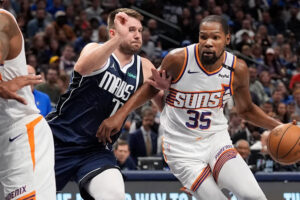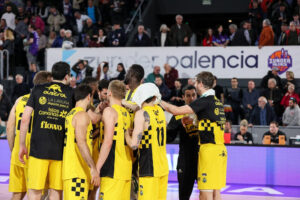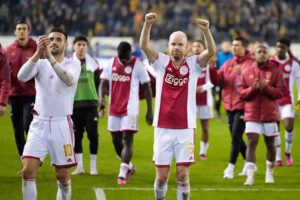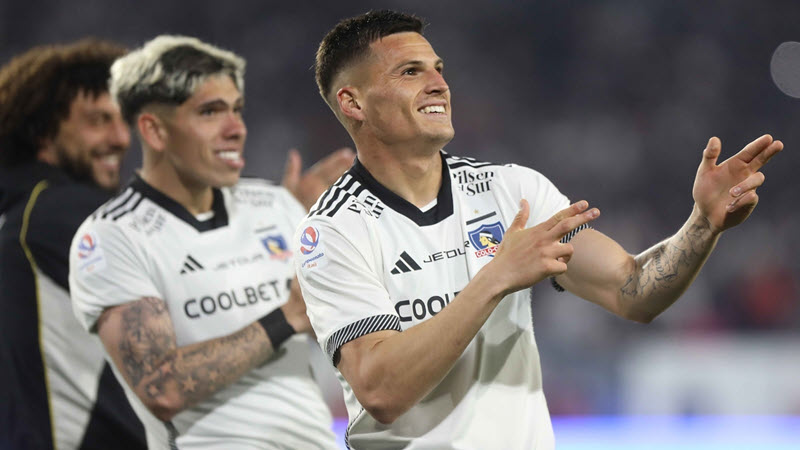The Weeknd’s show at Super Bowl halftime this Sunday.James Lang / Reuters
The Super Bowl of the pandemic ended, in sports, with a crushing and deserved victory of the Tampa Buccaneers over the Kansas City Chiefs, 31-9, which is worth the Florida team their second title, 19 years after the First. The match allowed Tom Brady, a legend among legends, to throw two passes from touchdown his old friend Rob Gronkowski and snatch the record for the oldest player to lift the trophy. He raises it for the seventh time, at age 43, the season he moved south from the New England that forged his myth. It was, as anticipated, a match of the quarterbacks. And in the generational duel between Brady and Patrick Mahomes, 25, the veteran beat the rising star who, with a slight limp, did not perform as expected.
Brady won as almost always. Beyond that, everything was different. The show of the Super Bowl of the coronavirus, like everything in these times, had a lot of strange and virtual. Half the audience was literally cardboard. Those smiling will go down in history fans two-dimensional nailed to the chairs, like daring ideas of science fiction authors. In television commercials, at five million dollars for every half minute, some brands jumped directly above the pandemic, even giving away utopias of people without masks to the nearly 100 million viewers; others paid homage to everyday heroes or appealed to the heart to sell countercyclical merchandise. The Indeed job portal looked for tears with stories of dreaming unemployed. The global food delivery chain Uber Eats was announced with the protagonists of Wayne’s World recommending eating at local restaurants.
Between one speech and another, the publicity contributed the second legend of the night, after Brady. It was Bruce Springsteen, who, after a 10-year chase, agreed to shoot a commercial for Jeep, the first to record in his 71-year life. It was a two-minute call to national unity from a chapel in Kansas, in the very geographic center of the United States (excluding Hawaii and Alaska), in times of pandemic and polarization. “There is nothing authentic about a paid Hollywood star who tells the story we want him to tell. There are famous people, and then there are legends ”, explained an executive marketing from brand to The New York Times.
But there was nothing more 2020 than the performance, in the stellar space of the intermission, of The Weeknd. A year ago Shakira and Jennifer López celebrated the Latin heat. Its overwhelming show it was flesh, sweat, saliva, hands, mouths and hips, fluids and organs that are longed for today. This was the antithesis of social distance, the reverse of face masks and hand sanitizer. No one knew then, but it was a goodbye. A goodbye to a world that, 12 months later, looks much more like the cold and lonely territory in which The Weeknd moved.
Everything that the spectacle of the Latin divas overflowed was missing in that of the 30-year-old Canadian Abel Tesfaye. It faced enormous challenges due to the pandemic, which forced (only) about a thousand people to take over production on the ground. Without the heat and interaction of the audience, the set moved to the top of the stands, where the boy wonder of the r&b singing Starboy Y The Hills in an imposing set with rows of lights and a choir that maintained social distance. Then he circulated through the oppressive corridors of mirrors and dressing room lights singing I can’t feel my face, dancers fluttering around him, their faces covered by bandages. Between fireworks, The Weeknd returned to the open air and ended with a liberating final touch, outside at the end of the dictates of the video clip, running among a disturbing army of dancers, also with their faces bandaged and wearing the same clothes as the star, who sang his irresistible hit disco pop Blinding lights.
The same coldness weighed down on the sober yet over-calculated performance of the young poet Amanda Gorman, who, after wowing the world with her most spontaneous recital at the inauguration of President Joe Biden, introduced poetry for the first time in Super Bowl history. The 22-year-old poet read her own verses before the game that paid tribute to three essential workers during the pandemic, a Marine veteran, a teacher and a nurse.
The national anthem was sung for the first time by a duo, formed by the star of the country Eric Church and the singer of soul Jazmine Sullivan. And there hidden was another legend, evoked in Sullivan’s hairstyle, a veiled tribute to Whitney Houston’s in the film The bodyguard. Hours earlier, during rehearsals, the singer wore a white sweatshirt, a nod to the one Houston wore in his memorable performance of the anthem in 1991. That year she was at the peak of her career and the country, under the presidency of Bush Sr. , had just entered the Gulf War. That Super Bowl was a moment of exaltation of patriotism. Of emotion, fear and tension. Whitney Houston found the tone and will always be remembered for it. Thirty years later, there were stars and, for better or worse, there was tone. It remains to be seen if there will be material to remember.











